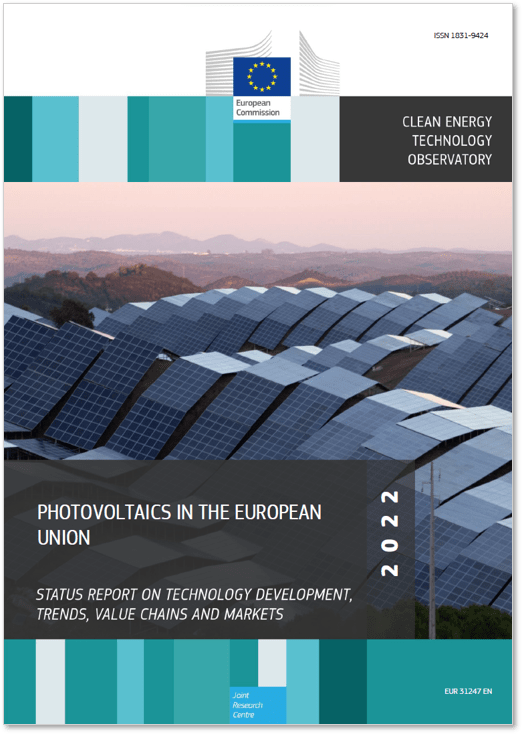The Clean Energy Technology Observatory (CETO) report on Photovoltaics (PV) covers the technology’s current state, future trends, value chain analysis, and the European Union’s (EU) global competitiveness. Here’s a summary of the key points in about 500 words:
- Growth and Capacity: Photovoltaics is the fastest-growing renewable energy source for electricity production, crucial for the EU’s energy transition and the European Green Deal. The global cumulative PV capacity surpassed 1 TW in March 2022, with the EU contributing 170 GW by the end of 2021, generating 158 TWh of electricity.
- Technological Advancements: The efficiency of PV modules has significantly improved, with the average module efficiency rising from 9% in 1980 to 20.9% in 2021. Silicon-based photovoltaic technology dominates due to its higher efficiency (over 24%). Thinfilm technologies like Copper Indium (Gallium) Selenide (CIGS) and Cadmium Telluride (CdTe) are focusing on mass production to benefit from scaling effects. Perovskite and multi-junction technologies show promising efficiency advancements.
- Market Trends: There is a shift towards more efficient technologies such as Tunnel Oxide Passivated Contact (TOPCon) and the emergence of bifacial modules, enhancing light absorption efficiency. Additionally, innovative applications like AgriPhotovoltaics are being explored.
- Cost Reductions: Solar PV costs have significantly decreased since 2010, driven by large-scale manufacturing and intensive R&D efforts. The Levelised Cost of Electricity (LCoE) for utility-scale projects dropped by 88% from 2010 to 2021 and is projected to decrease further.
- EU Funding and Innovation: EU’s public and private R&I funding in solar has been substantial, although not uniformly reported across member states. The EU holds a significant share in global public R&I funding and high-value patents in PV, although it ranks behind China, South Korea, and Japan in total patents. H2020 and Horizon Europe programs have and are expected to continue significantly funding PV-related projects.
- Environmental Impact and Sustainability: The Energy Payback Time (EPBT) of PV systems is impressively short, but the industry aims to further reduce its environmental footprint and increase sustainability across the value chain.
- Economic Impact and Job Creation: The EU’s PV sector experienced a slight turnover decrease in 2020, attributed to cost reductions rather than a decrease in output. Germany and the Netherlands account for a significant portion of the EU’s turnover. Job creation in the PV sector has grown, primarily in system deployment rather than manufacturing.
- Global Competitiveness: The EU is working to strengthen its position in the global market, with plans for large-scale manufacturing capacities. However, it faces challenges from dominant Chinese companies in solar cell and module production. European companies like SMA (Germany) and Power Electronics (Spain) have seen reduced market competitiveness.
- Trade and Raw Materials: The EU’s trade balance in PV has been negative, with increasing imports and decreasing exports. While not currently affected by critical raw material supply risks, the EU needs to address potential concerns such as silver usage and PV glass imports, mainly from China.
- Future Outlook: The advancements in PV are essential for meeting EGD targets and fostering competitive European industrial players. The aim is to increase the value of products and relocate more of the photovoltaics value chain within Europe, enhancing the EU’s position in the global market.

